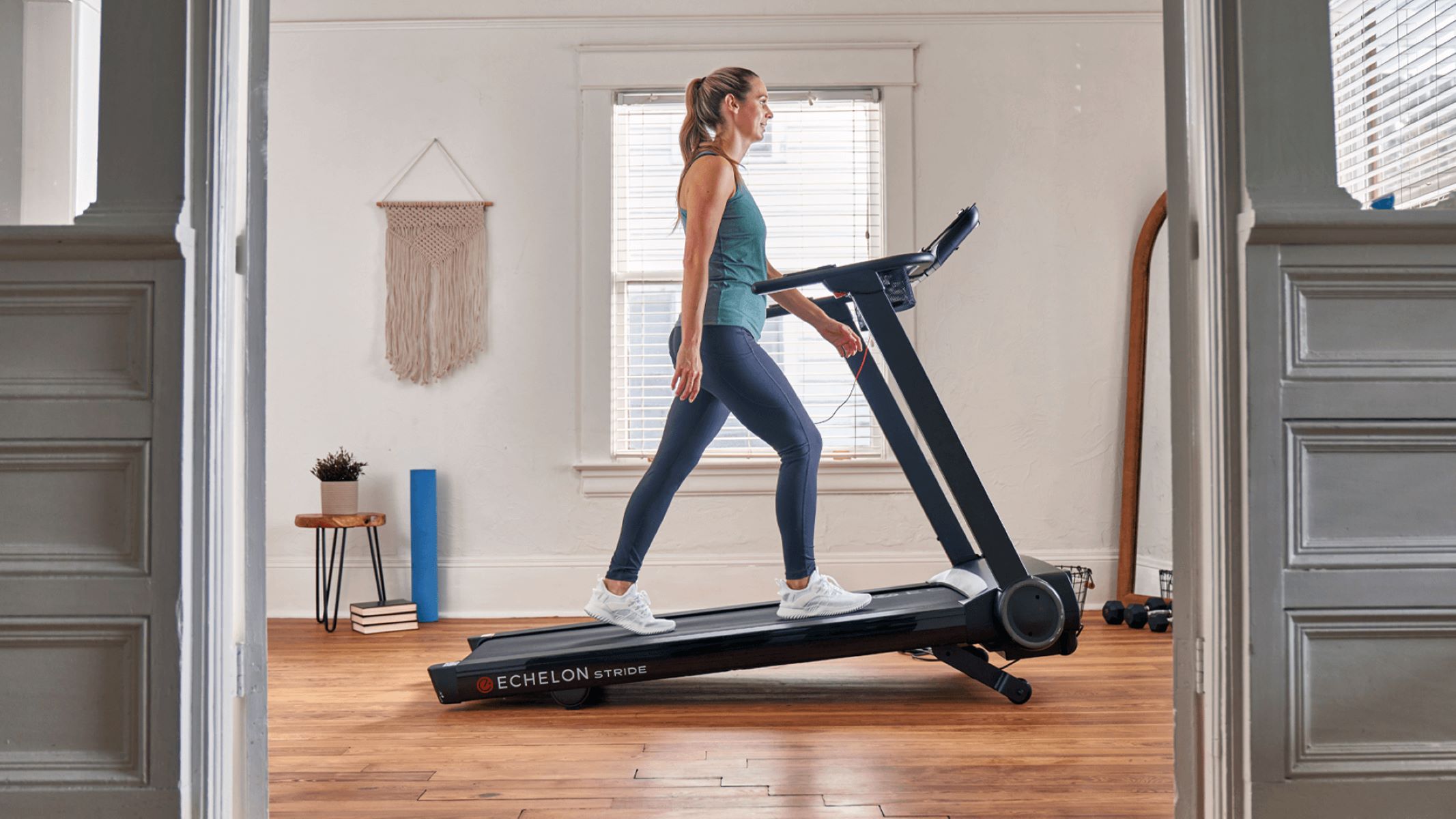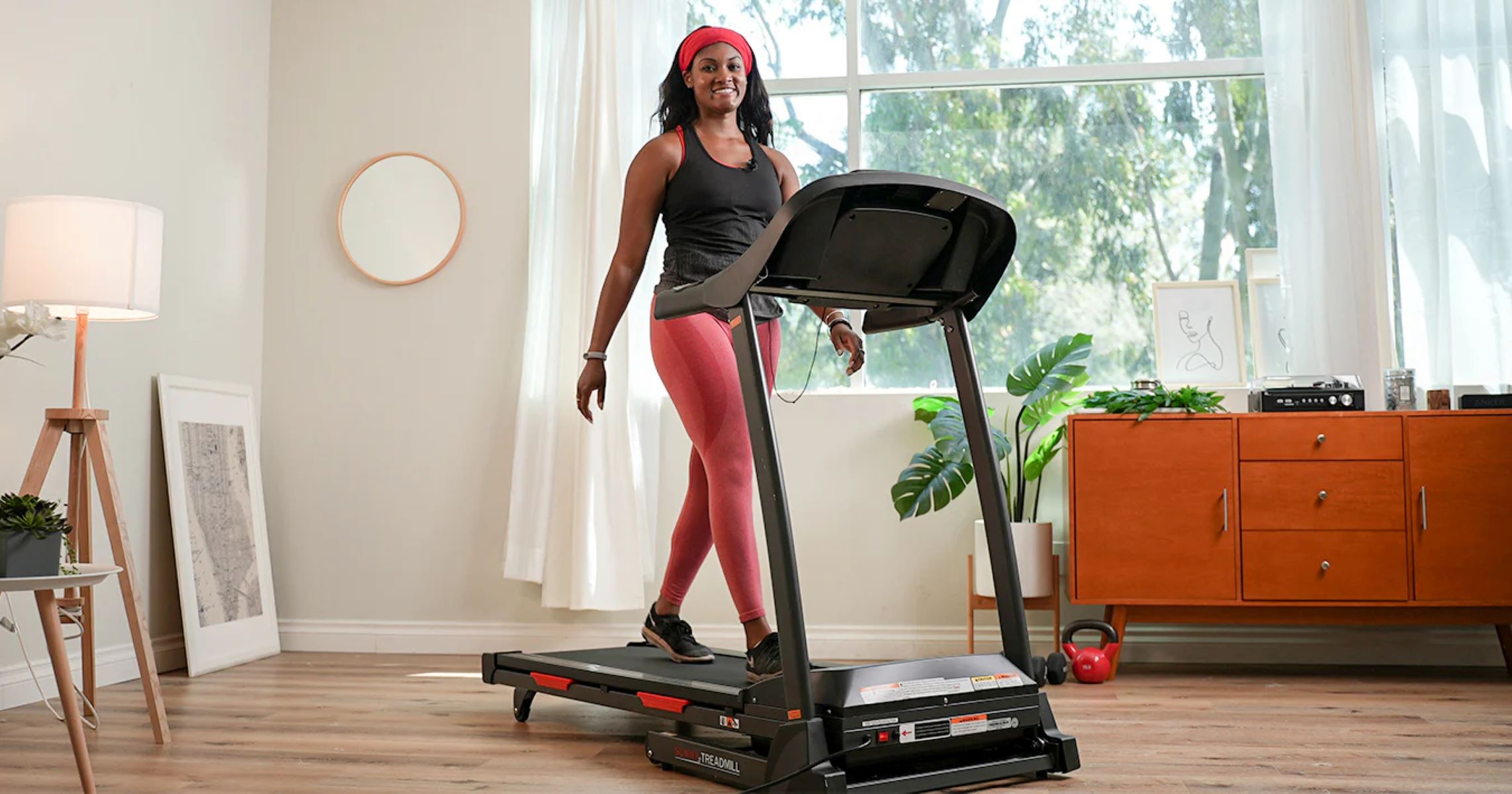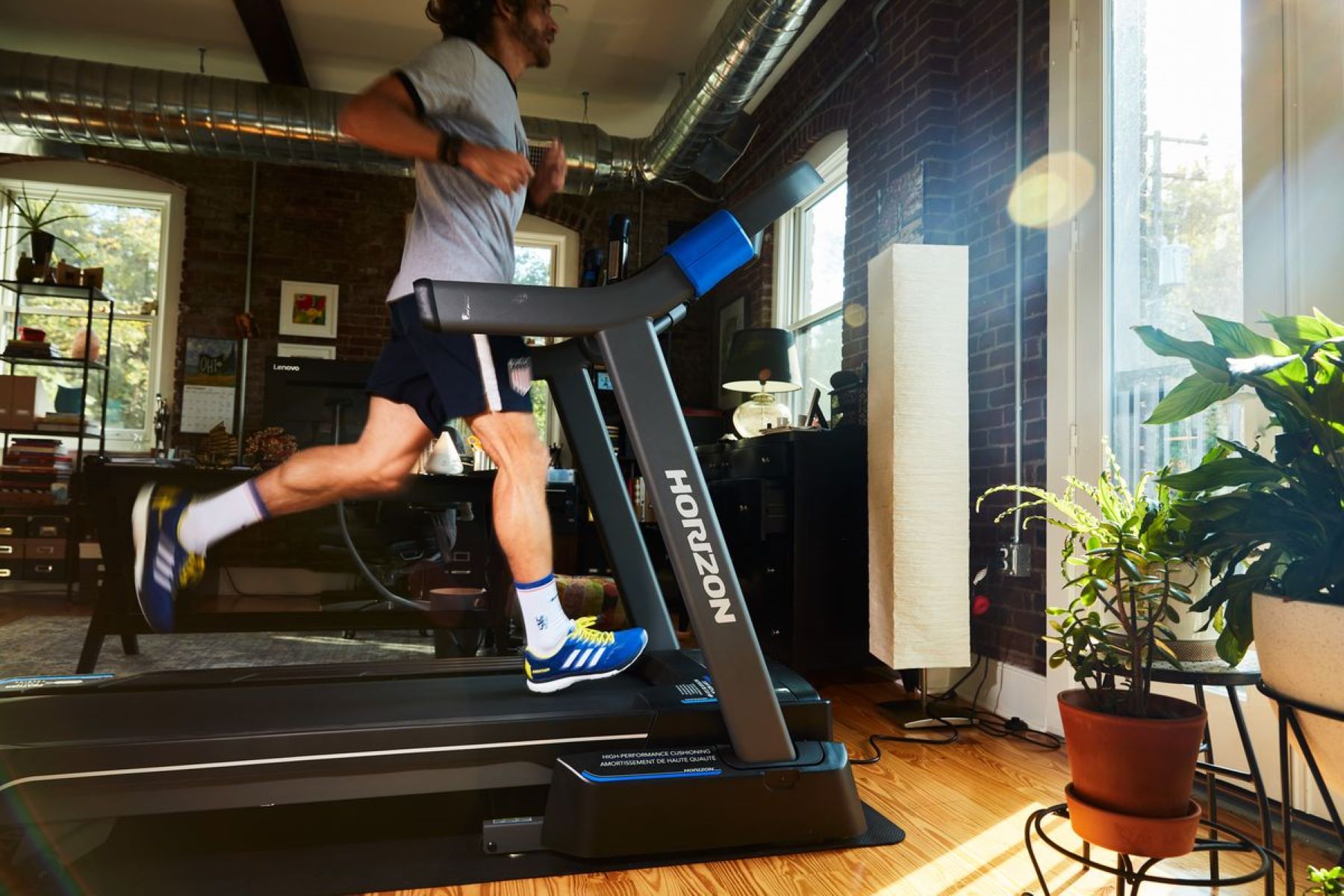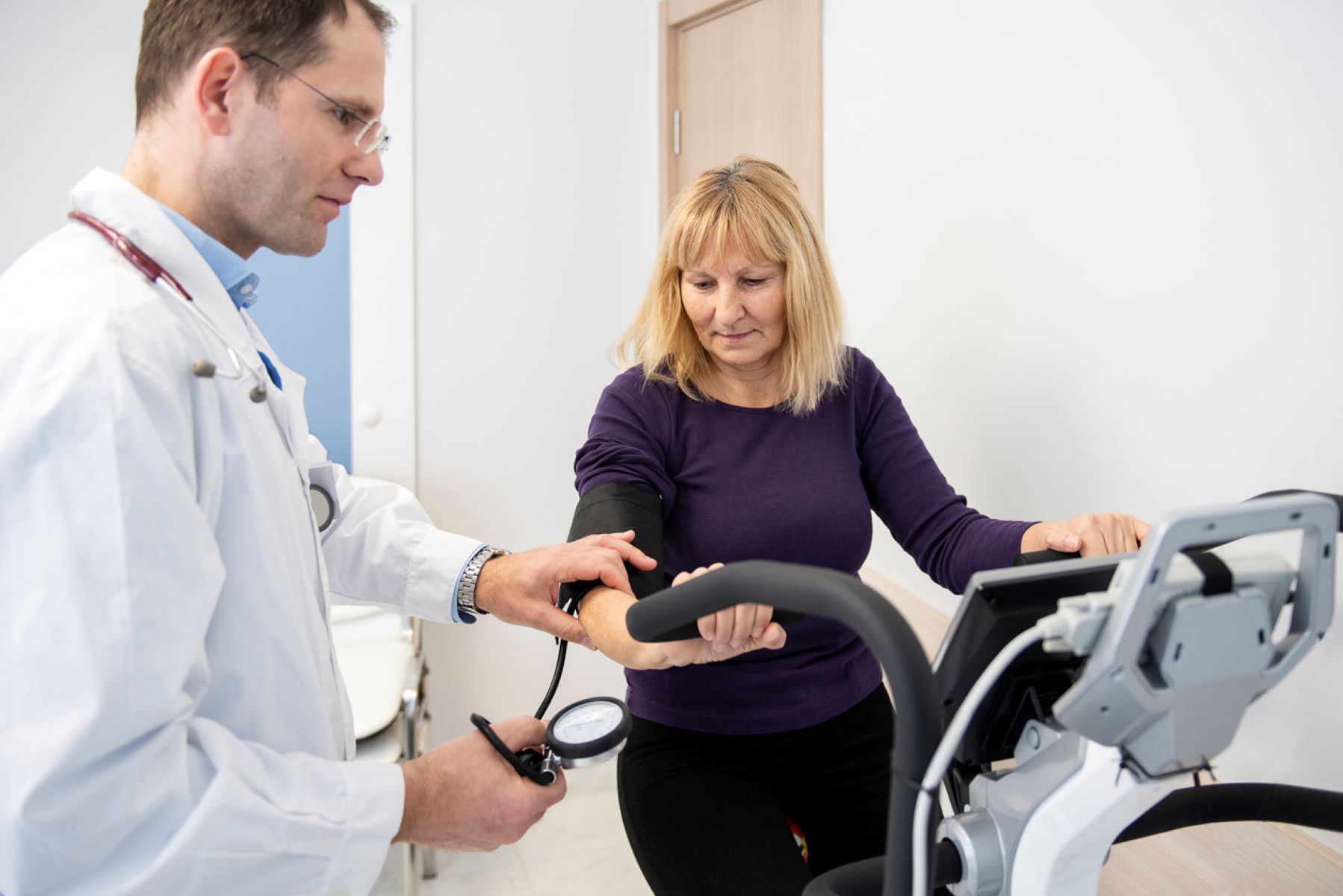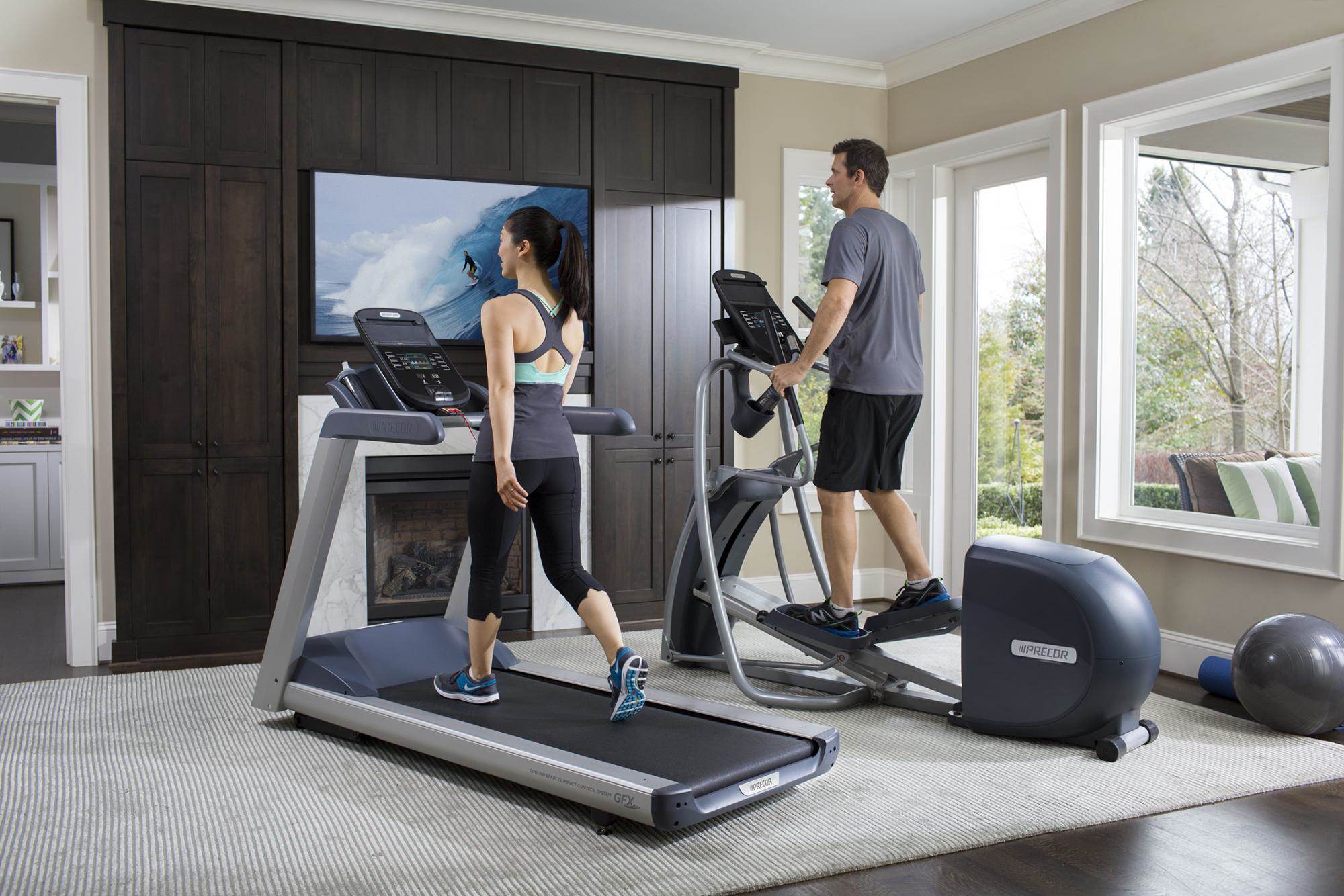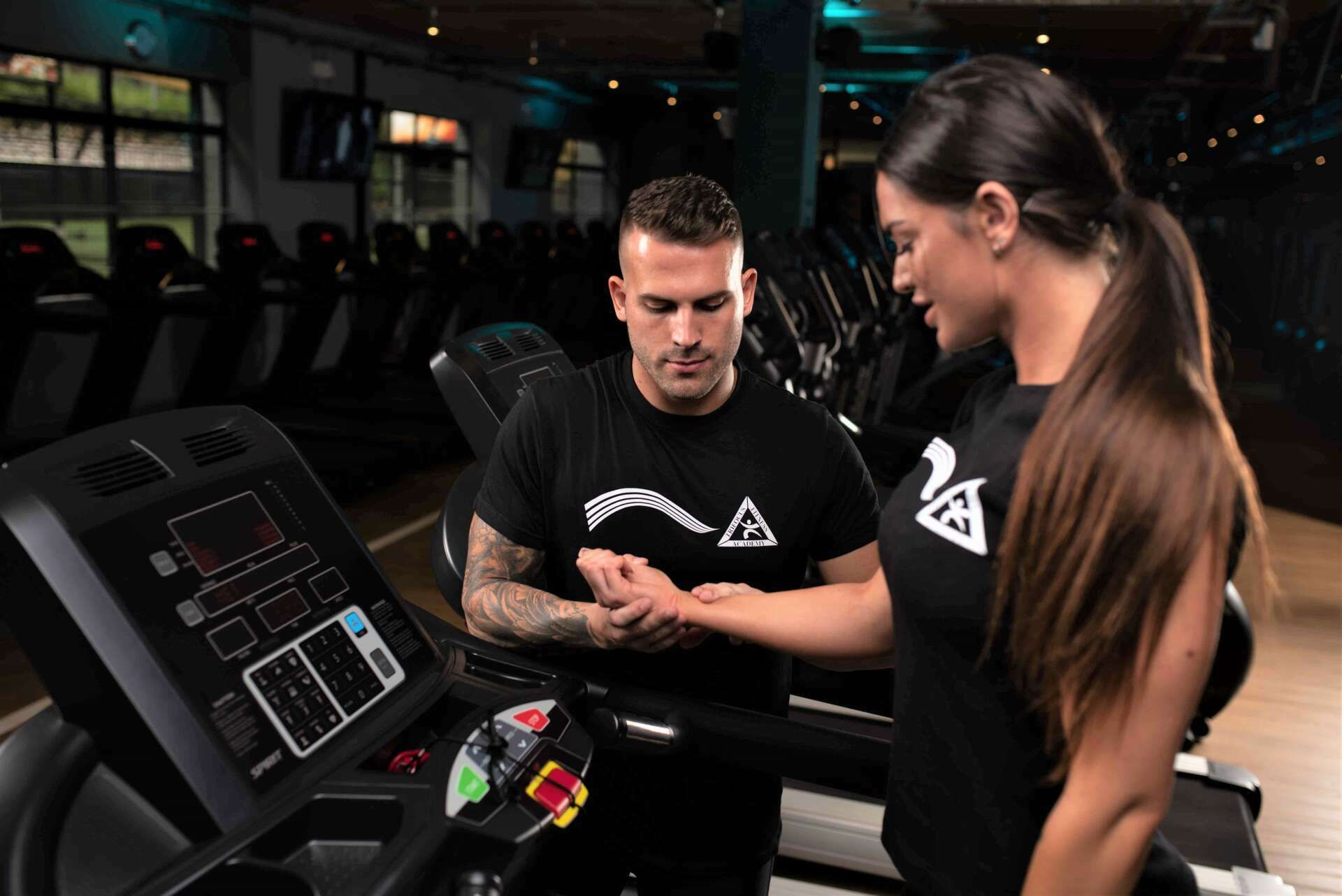

Featured
What Should Heart Rate Be On Treadmill
Modified: January 22, 2024
Discover what your heart rate should be while using a treadmill. Benefit from our featured guide to optimize your workout and reach your fitness goals.
Introduction
Welcome to the world of treadmill workouts! Whether you are a fitness enthusiast or just beginning your fitness journey, understanding the importance of heart rate while using a treadmill is crucial. Your heart rate is a valuable indicator of your cardiovascular health and workout intensity.
Using a treadmill offers numerous benefits, including convenience, versatility, and the ability to monitor your heart rate during your workout. Monitoring your heart rate allows you to gauge your effort level and adjust the intensity of your workout accordingly. But what should your heart rate be on a treadmill? In this article, we will explore the ideal heart rate range and how to monitor and maintain it.
Before diving into heart rate zones and target ranges, it’s important to have a basic understanding of heart rate. Your heart rate is a measure of how many times your heart beats per minute (BPM). It is influenced by various factors, including age, fitness level, and exercise intensity. By monitoring and managing your heart rate during treadmill workouts, you can optimize your training and achieve better results.
So why is heart rate important on a treadmill? When you exercise, your heart beats faster to supply enough oxygen-rich blood to your muscles. By maintaining an appropriate heart rate range, you can ensure that your cardiovascular system is efficiently working, enhancing performance and improving overall health.
Next, we will explore the factors that can affect your heart rate on a treadmill and delve into the ideal heart rate range to aim for during your workouts.
Understanding Heart Rate
Heart rate is a fundamental measure of your cardiovascular health and exercise intensity. It represents the number of times your heart beats per minute (BPM) and serves as a valuable tool for monitoring and optimizing your workout.
Resting heart rate refers to your heart rate when you are at complete rest, such as when you are sitting or lying down. It is generally lower for individuals who are physically fit. Regular exercise can help lower your resting heart rate over time, indicating a stronger and more efficient cardiovascular system.
Maximum heart rate, on the other hand, is the highest number of beats your heart can achieve in one minute. It varies based on age, and a common estimation formula is subtracting your age from 220. Understanding your maximum heart rate can help you determine your target heart rate zones during exercise.
Heart rate zones are specific ranges of heart rate that correspond to different levels of exercise intensity. These zones determine the physiological benefits you can achieve during your workout. The American Heart Association has established five heart rate zones:
- Zone 1 – Very light intensity: 50-60% of maximum heart rate. This zone is ideal for warm-ups and cool-downs.
- Zone 2 – Light intensity: 60-70% of maximum heart rate. It helps improve endurance and fat burning.
- Zone 3 – Moderate intensity: 70-80% of maximum heart rate. This zone enhances cardiovascular fitness and aerobic capacity.
- Zone 4 – Vigorous intensity: 80-90% of maximum heart rate. It improves anaerobic fitness and increases speed and power.
- Zone 5 – Maximum intensity: 90-100% of maximum heart rate. This zone is for short, intense bursts of effort.
Understanding these heart rate zones can help you tailor your treadmill workouts to your specific goals, whether it’s weight loss, cardiovascular health, or endurance training. By exercising within your target heart rate zone, you can optimize the benefits of your workout and avoid overexertion.
In the next section, we will explore the importance of heart rate on a treadmill and how it can impact your overall fitness journey.
Importance of Heart Rate on a Treadmill
The treadmill provides a controlled and efficient way to engage in cardiovascular exercise. Monitoring your heart rate while using a treadmill is crucial for several reasons:
- Optimizing Workout Intensity: Your heart rate serves as a direct indicator of how hard your cardiovascular system is working during exercise. By keeping your heart rate within the appropriate zone, you can ensure that you are pushing yourself enough to improve cardiovascular fitness without overexertion.
- Effective Weight Management: Understanding your heart rate on a treadmill can help you achieve your weight loss goals. By exercising within the appropriate heart rate zone, you can maximize fat burning and create a calorie deficit, which is essential for weight loss.
- Improving Cardiovascular Health: Regular cardiovascular exercise, such as using a treadmill, helps strengthen your heart muscle and improve overall cardiovascular health. By monitoring your heart rate, you can ensure that you are engaging in exercise that is challenging enough to stimulate improvements in heart health.
- Enhancing Endurance: Utilizing the appropriate heart rate zone on a treadmill helps improve your endurance and aerobic capacity. By gradually pushing yourself to higher heart rate zones, you can increase your stamina and prolong exercise duration.
- Preventing Overexertion: Monitoring your heart rate can prevent overexertion during workouts. If your heart rate is too high and remains elevated for an extended period, it can increase the risk of fatigue, injury, and even heart problems. By staying within the recommended heart rate zone, you can ensure a safer and more effective workout.
By understanding the importance of heart rate on a treadmill, you can make informed decisions about your workout intensity and duration. The next section will explore the factors that can affect your heart rate while using a treadmill.
Factors Affecting Heart Rate on a Treadmill
Your heart rate on a treadmill can be influenced by various factors. Understanding these factors can help you adjust and optimize your workout for maximum benefits. Here are some key factors that can affect your heart rate while using a treadmill:
- Fitness Level: Your current fitness level plays a significant role in determining your heart rate response during exercise. Individuals who are more physically fit tend to have lower resting heart rates and can achieve a higher maximum heart rate during intense workouts.
- Age: Age is another crucial factor that affects heart rate. As we age, our maximum heart rate tends to decrease. It is important to adjust your target heart rate zones accordingly, taking into account your age-related changes.
- Medication and Health Conditions: Certain medications, such as beta-blockers, can lower your heart rate. Additionally, various health conditions like hypertension or cardiovascular diseases can impact your heart rate response during exercise. It is essential to consult with your healthcare provider if you have any concerns or specific health conditions.
- Environmental Factors: Environmental factors such as temperature and humidity can impact your heart rate. High temperatures or humidity can make your heart work harder to cool your body, resulting in an elevated heart rate during exercise.
- Intensity of Exercise: The intensity level of your treadmill workout directly affects your heart rate. Higher speeds, incline levels, and more challenging workout programs will lead to an increased heart rate compared to lower-intensity workouts.
- Hydration and Nutrition: Proper hydration and nutrition play a vital role in maintaining a healthy heart rate during exercise. Dehydration and low blood sugar levels can cause an elevated heart rate, so it is essential to stay hydrated and fuel your body appropriately before your treadmill workout.
By considering these factors, you can better understand why your heart rate may fluctuate during treadmill workouts. Monitoring your heart rate allows you to adjust your exercise intensity accordingly, ensuring a safe and effective workout. In the next section, we will explore the ideal heart rate range to aim for during your treadmill workouts.
Ideal Heart Rate Range on a Treadmill
The ideal heart rate range on a treadmill varies based on your fitness goals and overall health. Generally, most individuals aim to exercise within a target heart rate zone that is between 50-85% of their maximum heart rate. This range ensures that you are exercising at an intensity that is challenging enough to improve cardiovascular fitness without pushing yourself to the point of overexertion.
To determine your target heart rate range, you first need to calculate your maximum heart rate. A common estimation formula is subtracting your age from 220. For example, if you are 40 years old, your estimated maximum heart rate would be 220 – 40 = 180 BPM.
Once you have determined your maximum heart rate, you can then calculate your target heart rate range using the percentages mentioned above. For example, if you want to exercise at a moderate intensity, you would aim for a heart rate that falls within 70-80% of your maximum heart rate.
It’s important to note that these percentages are general guidelines, and individual variations may occur. Factors such as fitness level, health conditions, and goals should be taken into consideration when determining your ideal heart rate range.
Additionally, it can be beneficial to work with a fitness professional or consult with your healthcare provider to determine the most appropriate heart rate range for your specific needs.
Regularly monitoring and adjusting your heart rate on a treadmill can help you gauge your effort level and ensure that you are exercising within your desired target heart rate zone. This allows for effective and efficient workouts, contributing to your overall fitness and well-being.
In the next section, we will discuss various methods for monitoring your heart rate while using a treadmill.
Monitoring Heart Rate on a Treadmill
Monitoring your heart rate while using a treadmill is essential to ensure that you are exercising within your desired target heart rate zone. There are several methods available to track your heart rate during your workout:
- Heart Rate Monitors: Heart rate monitors come in various forms, including chest straps, wrist-based monitors, and smartwatches. These devices use sensors to detect your heart rate and provide real-time feedback. They are often considered the most accurate way to monitor heart rate during exercise.
- Treadmill Heart Rate Sensors: Many treadmills have built-in heart rate sensors on the handlebars. By gripping these sensors, the treadmill can measure your heart rate. While convenient, these sensors may not be as accurate as other methods, and they require you to maintain constant contact with the handles.
- Multifunctional Fitness Trackers: Fitness trackers, such as wristbands or smartwatches, offer heart rate monitoring capabilities along with other fitness tracking features. These devices use optical sensors to measure your heart rate from your wrist. While not as accurate as chest straps, they provide a convenient and portable option for monitoring heart rate.
- Perceived Exertion: Perceived exertion is a subjective method of monitoring your heart rate based on how you feel during exercise. It involves gauging your effort level using a scale of 1 to 10, with 1 being very light and 10 being maximum effort. While perceived exertion can be useful, it may be less accurate than other methods.
Choose the monitoring method that best suits your preferences and needs. Keep in mind that accuracy and comfort are important considerations. It may be beneficial to try different methods and determine which one works best for you.
Regardless of the monitoring method, it is crucial to pay attention to your heart rate during your treadmill workout. Aim to keep your heart rate within your target heart rate range to achieve the desired benefits of your exercise session.
In the next section, we will provide some tips for maintaining your target heart rate on a treadmill.
Tips for Maintaining Target Heart Rate on a Treadmill
Maintaining your target heart rate on a treadmill can be challenging, especially as you increase the intensity of your workout. However, with a few tips and strategies, you can ensure that you stay within your desired heart rate range. Here are some tips for maintaining your target heart rate on a treadmill:
- Warm-Up and Cool-Down: Begin your treadmill workout with a proper warm-up to gradually raise your heart rate. This prepares your body for the upcoming exercise and helps prevent any sudden spikes in heart rate. Similarly, end your workout with a cool-down period to gradually lower your heart rate.
- Adjust Speed and Incline: To keep your heart rate within the target range, make adjustments to the treadmill’s speed and incline as necessary. Increase the speed or incline to raise your heart rate, or decrease them to lower it. Pay attention to your body’s response and adjust accordingly to maintain the desired intensity.
- Interval Training: Incorporate interval training into your treadmill workouts. This involves alternating between periods of higher intensity and lower intensity. By including intervals of higher intensity, you can challenge your cardiovascular system and maintain an elevated heart rate throughout the workout.
- Focus on Breathing: Pay attention to your breathing during your treadmill workout. Slow, deep breaths can help regulate your heart rate and keep it within the desired range. If you find yourself gasping for air or struggling to breathe, adjust the intensity to bring your heart rate under control.
- Listen to Your Body: It’s crucial to listen to your body’s signals during your treadmill workout. If you feel fatigued, dizzy, or experience any discomfort, slow down or take a break. Pushing yourself too hard can lead to overexertion and adverse effects on your health.
- Mix Up Your Workouts: Avoid sticking to the same routine every time you use the treadmill. Mixing up your workouts with different programs, intervals, or incline levels can keep your body challenged and prevent plateaus in heart rate response.
- Stay Hydrated: Dehydration can impact your heart rate and overall performance. Make sure to drink an adequate amount of water before, during, and after your treadmill workout to stay hydrated and maintain optimal heart rate levels.
Remember, maintaining your target heart rate on a treadmill may take some practice and experimentation. Over time, you will become more familiar with your body’s response to different workout intensities and be better able to adjust and maintain the desired heart rate range.
By incorporating these tips into your treadmill workouts, you can optimize the cardiovascular benefits of your exercise and achieve your fitness goals effectively.
In the final section, we will wrap up the article with a recap of the importance of heart rate on a treadmill and the key takeaways.
Conclusion
Heart rate is a critical aspect to consider when using a treadmill for your workouts. By understanding and monitoring your heart rate, you can optimize the effectiveness of your exercises and achieve your fitness goals. Maintaining an appropriate heart rate range allows you to challenge your cardiovascular system without overexertion, and it helps improve endurance, burn calories, and enhance overall cardiovascular health.
We explored the various factors that can affect your heart rate on a treadmill, such as fitness level, age, medications, and environmental conditions. It’s essential to be aware of these factors and make adjustments accordingly to ensure a safe and effective workout.
Your ideal heart rate range on a treadmill depends on your goals and overall health. Calculating your maximum heart rate and determining your target heart rate zones allow you to exercise at the right intensity to reap the desired benefits. Remember, these ranges are estimates, and individual variations may occur, so it’s always a good idea to consult with a fitness professional or healthcare provider for personalized recommendations.
During your treadmill workouts, monitoring your heart rate is crucial. Various methods, such as heart rate monitors, treadmill sensors, fitness trackers, and perceived exertion, can help you track your heart rate in real-time. Choose the method that suits your needs and preferences while considering accuracy and comfort.
To maintain your target heart rate on a treadmill, follow the tips provided. Warm-up and cool-down properly, make adjustments to the speed and incline, incorporate interval training, focus on your breathing, listen to your body’s signals, vary your workouts, and stay hydrated.
By implementing these strategies, you can ensure that you are exercising within your desired heart rate range and maximizing the benefits of your treadmill workouts.
Remember, everyone’s fitness journey is unique, and it takes time and consistency to see progress. Don’t be discouraged by fluctuations in your heart rate or fitness level. With perseverance and a better understanding of your heart rate, you can achieve your fitness goals and enjoy improved cardiovascular health.


